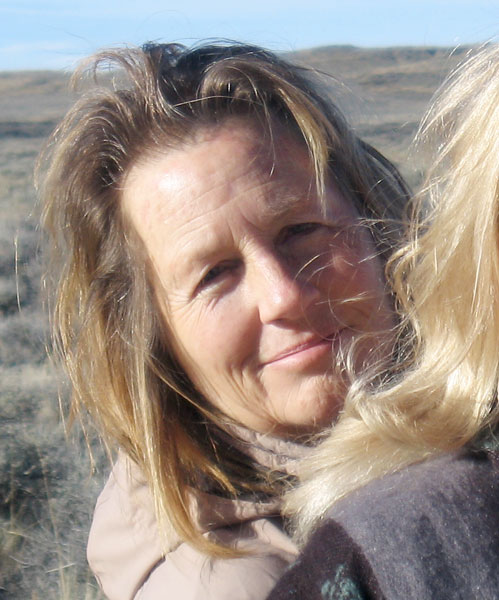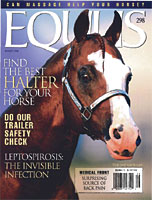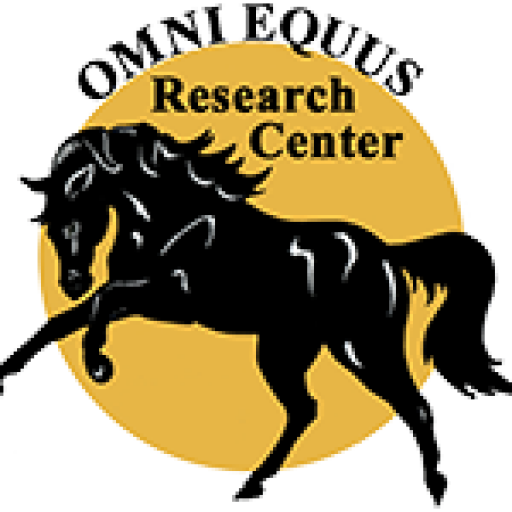Aleta McCormick
 California certified human massage therapist, Aleta McCormick has devoted more than 25 years of her life to educating horse owners and promoting her unique, self-developed method of administering deep tissue bodywork to performance horses, injured horses, and senior horses.
California certified human massage therapist, Aleta McCormick has devoted more than 25 years of her life to educating horse owners and promoting her unique, self-developed method of administering deep tissue bodywork to performance horses, injured horses, and senior horses.
Aleta, a horse owner herself, applied and transferred her considerable training, skill and experience in human massage work over to horses, after perceiving that deep tissue massage can enhance human performance and reverse weaknesses and injuries. If it worked for humans, why would deep tissue massage not also benefit the equine athlete, she wondered.
She developed her own unique, intensive, deep tissue massage and bodywork technique over many years by direct examination and experimentation on the muscle systems of race horses and older show horses. While some massage therapists use only the limited strength of their hands to press, probe, and reposition equine muscle and tissue, Aleta’s technique has evolved into a sophisticated, structured, repetitive series of deep tissue pressure, separation and flushing movements performed over a horse’s neck, shoulders, back, hindquarters, and legs, using currycombs that vary in size and rigidity.
Utilizing currycombs as her tool allows Aleta to apply a variety of levels of pressure to her subjects, and manipulate, separate, and reposition a horse’s soft tissues to a deeper and more extensive degree, all the while maintaining a high degree of consistency over the repetitive motions she performs on both sides of the horse.
Aleta’s methods are similar to Rolfing, a style of human massage and bodywork that aligns the major body tissue through manipulation of muscle fascia. Her technique involves manipulating, stimulating, separating, and flushing a horse’s connective muscle fascia by working surface and progressively deeper tissues, layer by layer. This technique is called the Aleta McCormick’s Equine Curry Comb Method.
This manipulation not only stimulates the muscles and increases blood flow, but also serves to loosen and clear muscle lactic acid buildup, muscle spasms and knots, and break up adhesions and scar tissue, thus freeing up the muscles to move more freely and allow a greater range of motion. She has demonstrated in both her own and her clients’ horses that equine deep tissue massage can prevent and reverse injury, reduce healing time, and enhance the innate abilities in her equine subjects by promoting more free range of motion.
In 2000, following several years of practical experience and dramatic results in rehabilitating horses, Aleta founded Omni Equus Research Center (O.E.R.C.), a non-profit research and training organization. She is currently Executive Director of the organization.
She maintains an extensive affiliation and professional relationship with numerous horse breeders, veterinarians, farriers, and performance horse trainers throughout southern California, sharing her enthusiasm and research findings, enlisting their support, advice, and suggestions to refine her research work, and seeking new ways to train and treat horses.
The following is Aleta McCormick’s own story of her private research and its development.
Aleta McCormick’s account of her journey:
First, I have to say that I love exploring ways of helping horses using a Rolfing style of bodywork I learned back in the 80’s when I was working on human athletes and people with injuries. My human work became so predictable and the style of bodywork that I developed so successful that I just got bored.
To successfully transfer my method to an animal I have always had an affinity with was beyond exciting. Faced with a horse athlete (I began my journey in a hunter-jumper show barn) left me feeling lost and impotent. How to do this was as exciting as it was challenging.
To simulate the deep pressure I achieved on a human body using knuckles and elbows, I experimented with various types of horse grooming tools and ways to use them. It took some real trial and error, but I eventually settled on 2 types of curry combs. It wasn’t until 20 years later that I finally named my method: Aleta McCormick’s Curry Comb Method for the Equine Athlete. Obviously, this method can be used wherever needed on any horse with any physical problem.
I continued my research by taking on horses with seemingly incurable problems, often retired or scheduled for a worse outcome. They were the subjects for my research.
After a good 20 years, I was pretty surprised and happy with my results which by now were predictable. What kept things fresh and interesting was with horses, I could try new things on unfamiliar problems. Hence, Noble and Ladybug’s story.
A real bonus was in working my “magic” on various farm animals that to be honest, I thought were so bad they should probably be put down. Then, lo and behold, miracles continued to happen. At some point, I talked the Gentle Barn into hiring a friend who over the years has been the main person to help with my experimentations in movement. We had such success with our collaboration. Beth White would ride the horses in various styles of exercise and we would then discuss what worked and what to do differently. It was a great laboratory to work in for both of us. By my choice, I no longer affiliate myself with them but I will always be grateful for that experience that began back when the gentle barn was a rinky dink back yard nonprofit. I felt it was time to stop furthering the success of other’s and begin taking the credit where it was due.
The bottom line is, I will continue taking on these new “impossible” problem horses for to further my own education by trying different ideas as they come to me. My ultimate goal is always to pass on to others what I discover, not only to spread the information to benefit more animals than I can help by myself, but to be able to rescue these lost souls is its own amazing reward. There is no greater thank you than the one that comes from a grateful horse.
My personal outcome in all this is that through proper education in the biomechanics of the body, what seems so insignificant can in fact be causing injuries or setting the horse to fail body-wise down the road, can save lives and allow owners to quit relying on the expertise of possibly ignorant trainers. An example: young growing bodies of horses constantly going to the left in the training programs. Think about it would you allow your child to train for a sport in this unbalanced, lopsided way?
And as someone once said to me, “Aleta, you are the world’s best kept secret!” No, I say! I didn’t take all this on myself to die with that on my “grave stone”.
If you would like to assist in these amazing projects, any donations would be gratefully appreciated.
Articles
This article, details a lecture/demonstration given by Aleta McCormick on July 13, 2004.
Article by Mary Kaufman www.eticorral54.com
(This article has been reprinted with permission from Mary Kaufman – copyright 2004.) Click here for the pdf version

This article was featured in Equus Magazine, August 2002, issue 298.
This article is a comprehensive in-depth look into Omni Equus Research Center and Aleta McCormick’s bodywork techniques.
(The article is copyrighted material and has been used with permission from Equus Magazine – copyright 2002. All rights reserved.) Click here for the pdf version
Podcast from Aleta McCormick’s interview on KHTS with Michael Holt
Contact Us
Please fill out this form to send us a message. We look forward to hearing from you. Thank you.
